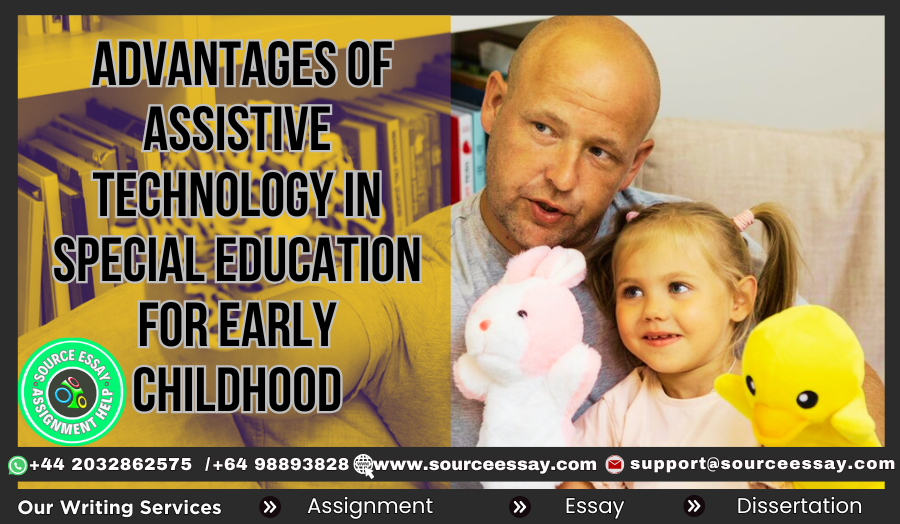Signs of development
The advantages of assistive technology in special education for early childhood. Special education refers to the educational program that is tailored towards the unique needs of young children, usually between the ages of two to six, who have yet to show signs of development or developmental delay, disability, or any other specific learning needs that the child might have. The goal is….
Individualized educational plans
The essence of early childhood education is to provide support and resources for children during their young age, allowing them to develop essential skills necessary for their career path or education moving forward. Individualized educational plans are designed for the specific needs of each child, outlining specific goals and strategies to accommodate their unique requirements. These plans help children develop essential skills for their future.
Technologies involving software
There are numerous advantages of using assistive technology in special education. Newer technologies are constantly evolving and advancing. However, there is a downside to the rapid evolution and advancement of technology. Technologies involving software and hardware allow technology to be everywhere.
Even though technology is available to children, it usually has a negative impact. However, with the correct level of understanding and usage, the same technologies can benefit the children who may need it.
App can enhance, reinforce, and increase
However, for certain children who have disabilities or are specially abled, technology can be a great way to mitigate the effects of their disability on their learning and general life. For example, alternative communication or AAC systems can help children by giving them a new door to millions of possibilities. Moreover, there are numerous advantages that these applications may provide, such as using…
The app can enhance, reinforce, and increase social skills, as well as language and communication. All of these can be achieved through technologies that fall under the umbrella of AAC.
Adaptive keywords or touch Screens
Children love technology, especially mobile phones and other similar devices, because of their interactivity, feedback, and ready availability. Such technology can be used as a medium for motivation and learning. If used correctly, it can boost skill development when used in tandem with appropriate supervision.
Tools such as adaptive keywords or touch screens often help children with physical disabilities to develop much finer motor skills. Allowing them even to attend or participate in classroom activities through different media such as keyboards or touch screens.
Mobility aids or self-care devices
Often these small gestures motivate a child to be much more inclined to work in or join in the class activities, aligning the child to not only develop socially.
Moreover, tools such as mobility aids or self-care devices empower the children to perform tasks on their own. Allowing the children to join activities that they would not be able to without these technologies gives the children a sense of independence and confidence that they so desperately may need.
The diverse nature of human
True reforming these barriers with assistive technology, especially in younger children, enables the children to learn, understand, and perform alongside individuals who may be different or equal. This allows the children to grasp the diverse nature of humanity and teaches them ethics and morality while also promoting an inclusive and equal sense in children.
Giving them the motivation
Majority of the software available for learning, especially for kids, is quite engaging and fun. Learning from educational games makes it incredibly interesting for children, with different colors, forms, and interactivity. It allows children to not only learn, regardless, also have fun learning, increasing their interest in the subject matter while also giving them the motivation to continue forward.
Software for cognitive challenges
Whether it be visual aid, the child might need it for sight impairment, or it would be hearing loss that can be helped with hearing aids. All these individual issues can be addressed with specialized software for cognitive challenges, and this assistive technology can meet a wide range of needs that a child might have.
Investing in such technologies can be greatly beneficial for the child, teacher, and parents. By providing them with effective tools for developing and nurturing their child, it would be an incredible step towards a more inclusive educational environment for all children. Allowing these children to grow in a much more inclusive environment gives them a sense of confidence while also enabling them to compete on a near-equal footing with everyone else.
REFERENCE
Disability Rights Washington. (2023, February 23). Assistive technology for special education students – Disability Rights Washington. https://disabilityrightswa.org/publications/assistive-technology-special-education-students/
online Assignment help England graduation from England masters in UK

